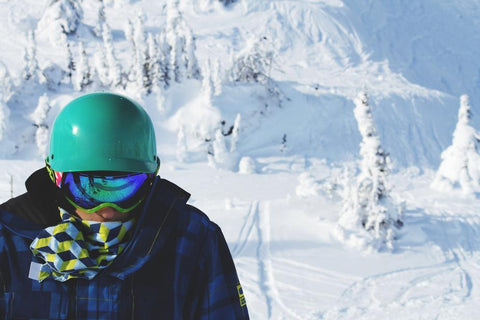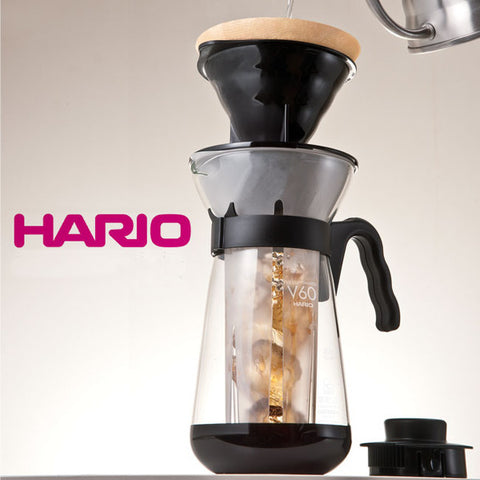Chill Out - A Primer On Cold Brew
Cold brewed coffee is on the minds of many coffee lovers these days. As a brew method, it's very much in fashion. Many non-coffee brewers are coming into contact with it because of the increasing number of bottled, ready to drink cold brews on the market, even here in South Africa. Perhaps most importantly, in the summer months, cold brew offers an alternative, warm-weather-friendly way to enjoy your coffee.

Given the surging interest in cold brew(ed) coffee, we thought we'd put together a primer for all those cold-brew-curious coffee lovers out there. What follows is a brief overview of what cold brew is, what it isn't, where it came from, what types there are, and how you can make it for yourself!
What cold brew is
What makes cold brew, cold brew is the fact that it's brewed cold! While that may seem like a lot of repetition for a single sentence, it's an important point to be aware of, as some beverages purport to be cold brew that really aren't (see next section).

When we say brewed cold, what we mean is not brewed hot like most coffee. Where you typically brew coffee somewhere between 80ºC and 96ºC, cold brew is made somewhere between fridge temperature (~º4C) and room temperature (~20-25ºC).
Now, before you run off and dump tepid water into your Aeropress hoping for tasty results, it's also important to note that cold brew almost always involves longer extractions as well... much, much longer. To counteract the slow extraction that results from the lack of heat, most recipes will recommend brew times somewhere between 4 and 24 hours.
Interestingly, almost all cold brew methods, makers and guides out there aim to produce coffee concentrate which you can then dilute with water, over ice, or even with some type of milk (if deep down you don’t actually like coffee).
What cold brew isn't (iced coffee)
One thing we need to clear up right away, is that cold brew is not the same thing as ice(d) coffee! Iced coffee is coffee that is brewed hot, usually in some sort of conventional method, and then cooled down. Sometimes, it’s cooled down almost instantly, as you might do with a brewer like the Hario V60 Ice Coffee Maker, but that still doesn’t make it cold brew.
The cup character of cold brew has a lot more to do with the fact that it is brewed cold than with the fact that it’s consumed cold. In fact, even if you warm cold brew back up (not as crazy as it sounds), it’s still going to taste different from hot brewed coffee from the same beans.
Where did cold brew come from?
Well, we don’t know for sure actually. You may hear cold brew referred to as ‘Dutch’ coffee or ‘Japanese cold drip’ and you’d be right in inferring that cold brew may have originated in one of these two countries. We do know that coffee has been cold brewed in those places for many years, possibly even as far back as the 1600s. Some theorise that it was the Dutch who introduced it to the Japanese, but nobody seems to know for sure.
The interesting part is that cold brew has actually been around a really long time. One has been able to buy concentrated cold brew in places all over the world for at least a few decades.
You could say that the modern history of cold brew started in the 1960s however, when Todd Simpson invented the Toddy Coffee Maker, which you can still buy today. Interestingly, he had the idea after a visit to Guatemala where he witnessed some bucket-based cold brewing in action. The origins may be very obscure, but there’s no question that Todd & his Toddy helped to (re)popularise the drink in the US, from where it launched its invasion of the rest of the world in the last decade.

For further reading, check out this article from Daily Coffee News
What’s all the fuss about?
If you’ve made it this far, you probably are at least a little bit interested in cold brew coffee, but it’s worth pausing to take a moment to reflect on why cold brew is so much the rage these days. In our eyes, it offers a few unique characteristics that have some coffee lovers hooked:
- It’s cold - We may be stating the obvious, but some people don’t like to drink hot coffee on a hot day (we don’t have this issue).
- It tends to be lower in tart acids - Because of the absence of hot extraction, cold brewed coffee can be a bit more mellow on the acids. Some companies even market it as more digestion friendly.
- It’s got a full body and nice mouth feel - While it tends to be less acidic, cold brew is no slouch on body or mouth feel; the long extraction times see to that.
- It can be brewed in big batches in advance - Aha! A reason for the lazy coffee lover to rejoice. You can whip up a couple of litres of cold brew and keep it in your fridge for a few days, rather than brewing fresh each time.
- It lends itself to bottling - This explains its commercial success as a ready to drink, though we’d recommend making your own.
- It’s what the cool kids are drinking - Let’s be honest, cold brew is all the rage.
There are two types of cold brewers
Perhaps you’re so intrigued by cold brew that you’re ready to start making some yourself. Before you immerse yourself (too easy), you’ll need to decide which one of two cold brewing methods you want to pursue.
Immersion
Todd’s famous Toddy is a great example of an immersion cold brewer. In immersion-based cold brew, you mix the water and coffee grounds in some sort of a vessel, and then filter at the end, after your desired extraction time has elapsed. Immersion cold brewing is usually cheaper and easier, but some coffee aficionados would argue that you lose some of the finer qualities of cold brew made by the drip method.
|
Immersion Pros |
Immersion Cons |
|
|
Cold drip
Cold drip is the cold brew method favoured by most speciality coffee establishments. The most famous example is probably the Yama Cold Drip Tower, which you may well see towering somewhere behind the espresso machine at one of your favourite coffee places.

Cold drip cold brew is definitely a bit more technical and requires a little bit of know how and ‘dialing in’. It also requires more expensive equipment, but the results can be particularly refreshing and tasty, as this method provides greater cup clarity and often helps to accentuate more subtle flavours and ‘top notes’ in your coffee.
|
Cold Drip Pros |
Cold Drip Cons |
|
|
There is a newer generation of cold drip coffee makers such as the Izac 700 for home available also these days. These can offer at least a more compact option, and in some cases a more affordable way, to make cold drip coffee at home.

How to start chilling out with cold brew
If you want to explore the world of cold brew, the easiest place to start may be coffee that’s been cold brewed by someone else (who knows what they’re doing). Bottled cold brew is unfortunately quite hit and miss. You’ve got to worry about things like freshness and the quality of the ingredients. If you happen to have access to a speciality coffee roaster or cafe that is brewing fresh batches every week, you should definitely pay them a visit.
We do think that a lot of the fun in coffee comes from making it yourself though, so when you’re ready to start cold brewing, check out our collection of cold brewing options. If you’re new to the cold brewing game, you don’t need anything fancy. Start with a simple and affordable immersion brewer like the Hario Bottle. You could even just use a simple coffee plunger for your first few attempts.

Once the cold brew bug has bitten and you want to explore the finer side of cold brew, you may want to invest in a higher end cold brew coffee maker. However, the result will only ever be as good as the quality and freshness of your beans will allow. You can’t make great cold brew from mediocre coffee. We’d suggest investing in quality, fresh beans (and a burr grinder), before any cold-brew-specific equipment.
If you need advice on which option to choose, we’re always here to help. Say hello on live chat or send us a message using our contact page.

Comments
Hi Phaedon
How fine should the coffee be ground for cold brewing and how much coffee per 250ml cup. Is it made like an Americano or do you brew the full cup?
Thanks
Gavoin Foley
Posted by Gavin Foley on January 21, 2019
Hi Gavin,
Generally cold brew is done at a higher ratio of 100-150g/L! You would typically dilute what you produce though as it comes out very concentrated.
So for a 250ml cup, you might start with 125ml of cold brew, made with 12.5 – 18.75g of coffee.
As for grind setting, it depends which cold brewer you’re using. Something like a cold drip would use a medium. An immersion cold brew would be coarser.
Hope that helps!
Posted by Cape Coffee Beans on January 21, 2019